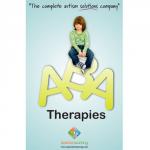Blog Categories
- ADHD
- Applied Behavior Analysis
- Autism Awareness
- Autism Service Providers
- Case Studies
- Dignosis
- Classroom Management
- Credentials
- Ethics
- Family Matters
- FAQs About LIVE Events
- Financial Planning
- Holiday Planning
- IEP's
- Panelists
- Private Equity in Autism & ABA Industry
- Psychopharmacology
- Sensory Processing Disorder
- Speech and Communication
- Subject Matter Experts
- Summer Planning
- Transition Planning
How To Identify Treatment Goals For Your Child
Expert Name: Michele LaMarche, BCBA
Expert Title: BCBA
Company Name: Founder, Step by Step Academy
Company URL: http://stepbystepacademy.org/
Short Bio: Michele received her BCBA certification from the University of North Texas and is currently working on her Doctorate in Clinical Psychology at Walden University. She is also the co-founder of Special Learning, Inc.
How To Identify Treatment Goals For Your Child
One of the first steps in obtaining needed services for your child is meeting with a service provider to develop a treatment plan or an Individual Service Plan (ISP). Often in these meetings, parents are faced with the challenge of trying to summarize their child’s needs. The service provider asks the parent, “What would you like us to work on with your child?” or “What does your child need?” Parents are often unprepared to answer these questions because their minds race through several different areas of needs at the same time. Often, the parent simply answers, “I’m not sure,” or something very vague such as “I want him to be able to talk.” While this statement is a valuable piece of information, it does not help the service provider fully understand what your child needs in order to be successful.
Below are some general treatment areas that may aid your service provider in developing treatment goals for your child:
● Communication skills
● Daily Living Skills
● Socialization or Social Skills
● Academic Readiness or Academic Skill Building
● Behaviors (Maladaptive, Oppositional and/or Adaptive)
● Behaviors (Hyperactive and/or Self-Stimulatory)
Each treatment area has a main goal and at least one objective or focus under that goal. For example, Mary’s main goal is to increase socialization and age appropriate social skills. Her focus for that goal is to be able to engage in interactive play, initiate greetings and begin to develop understanding of personal space. No goal should be so specific that it doesn’t allow room for expansion or growth. However, if there are specific targets that need to be addressed, those targets should be added. For example, John’s mom knows that he needs to develop daily living skills and she realizes that he desperately needs his service provider to work on potty training or increasing his food repertoire. Those specifics should be added to the goal statement to make sure that they are addressed.
The following steps can guide you in developing specific goals for each general treatment area:
Step 1
Communication
What to ask yourself when thinking about your child’s communication needs:
● Is your child able to gesture for what he/she wants? How does your child go about getting
your attention? Does he/she pull you, grab you, point or guide you to what he/she wants?
● Does your child have any language skills? If so, does he/she seem to understand the
meaning of the words he/she uses?
● Does your child have the ability to understand questions in context, respond to others,
ask appropriate questions or show interest in others through conversation? In other
words, does your child have conversational skills?
● Is your child able to describe or name an item and so on?
Step 2
Daily Living Skills
What to ask yourself when thinking about your child’s daily living needs:
● What type of things is your child capable of performing on his/her own? Can your child
dress/undress, groom and feed himself?
● Is your child toilet trained? Does your child have additional bathroom skills such as
washing hands, face and keeping proper hygiene after using the toilet?
● Is your child aware of safety measures such as not touching hot items or not talking to
strangers?
● Can your child tolerate grooming?
Step 3
Socialization or Social Skills
What to ask yourself when thinking about your child’s socialization needs:
● How does your child react to unfamiliar people? Does your child approach strangers by
touching them or staying close to them?
● Is your child able to play with another child not just side by side? Does your child
share toys or attention with others?
● Can your child tolerate loud noises or busy environments? Can your child tolerate
physical contact? Does your child become agitated when other children cry?
Step 4
Academic Readiness or Academic Skill Building
What to ask yourself when thinking about your child’s academic readiness needs:
● What academic skills does your child already possess? Does your child have math,
reading, writing skills? If so, what is his/her level or abilities in these areas?
● Does your child have difficulty with attentiveness, ability to focus and sit still? Is
your child easily distracted?
Step 5
Behaviors
What to ask yourself when thinking about your child’s behavioral needs:
● What type of behaviors does your child engage in; for example, is your child ggressive
towards others and/or himself?
● Does your child hit, bite, kick or scratch other often?
● How does does your child respond when he/she is asked to do a non-preferred task? Does
your child protest, become verbally aggressive, simply ignore you or attempt to walk away?
● Does your child engage in repetitive behaviors or self-stimulatory behaviors such as hand
flapping, rocking or repeating noises or words?
● Is your child constantly moving, engage in pacing, etc.?
● Does your child throw items or destroy property?
These are just some of the questions that can help you identify specific goals for your child’s treatment plan. There are more behaviors that can be included, some of which may be unique to your child. The most important thing to remember is to be as clear and concise as possible when discussing your child’s abilities, needs and behaviors. The more information you are able to provide, the better. The more your service provider understands your child’s behaviors and specific needs, the better he/she will be able to develop an individualized service plan to help your child attain and maximize his/her full potential.
Below are some general treatment areas that may aid your service provider in developing treatment goals for your child:
● Communication skills
● Daily Living Skills
● Socialization or Social Skills
● Academic Readiness or Academic Skill Building
● Behaviors (Maladaptive, Oppositional and/or Adaptive)
● Behaviors (Hyperactive and/or Self-Stimulatory)
Each treatment area has a main goal and at least one objective or focus under that goal. For example, Mary’s main goal is to increase socialization and age appropriate social skills. Her focus for that goal is to be able to engage in interactive play, initiate greetings and begin to develop understanding of personal space. No goal should be so specific that it doesn’t allow room for expansion or growth. However, if there are specific targets that need to be addressed, those targets should be added. For example, John’s mom knows that he needs to develop daily living skills and she realizes that he desperately needs his service provider to work on potty training or increasing his food repertoire. Those specifics should be added to the goal statement to make sure that they are addressed.
The following steps can guide you in developing specific goals for each general treatment area:
Step 1
Communication
What to ask yourself when thinking about your child’s communication needs:
● Is your child able to gesture for what he/she wants? How does your child go about getting
your attention? Does he/she pull you, grab you, point or guide you to what he/she wants?
● Does your child have any language skills? If so, does he/she seem to understand the
meaning of the words he/she uses?
● Does your child have the ability to understand questions in context, respond to others,
ask appropriate questions or show interest in others through conversation? In other
words, does your child have conversational skills?
● Is your child able to describe or name an item and so on?
Step 2
Daily Living Skills
What to ask yourself when thinking about your child’s daily living needs:
● What type of things is your child capable of performing on his/her own? Can your child
dress/undress, groom and feed himself?
● Is your child toilet trained? Does your child have additional bathroom skills such as
washing hands, face and keeping proper hygiene after using the toilet?
● Is your child aware of safety measures such as not touching hot items or not talking to
strangers?
● Can your child tolerate grooming?
Step 3
Socialization or Social Skills
What to ask yourself when thinking about your child’s socialization needs:
● How does your child react to unfamiliar people? Does your child approach strangers by
touching them or staying close to them?
● Is your child able to play with another child not just side by side? Does your child
share toys or attention with others?
● Can your child tolerate loud noises or busy environments? Can your child tolerate
physical contact? Does your child become agitated when other children cry?
Step 4
Academic Readiness or Academic Skill Building
What to ask yourself when thinking about your child’s academic readiness needs:
● What academic skills does your child already possess? Does your child have math,
reading, writing skills? If so, what is his/her level or abilities in these areas?
● Does your child have difficulty with attentiveness, ability to focus and sit still? Is
your child easily distracted?
Step 5
Behaviors
What to ask yourself when thinking about your child’s behavioral needs:
● What type of behaviors does your child engage in; for example, is your child ggressive
towards others and/or himself?
● Does your child hit, bite, kick or scratch other often?
● How does does your child respond when he/she is asked to do a non-preferred task? Does
your child protest, become verbally aggressive, simply ignore you or attempt to walk away?
● Does your child engage in repetitive behaviors or self-stimulatory behaviors such as hand
flapping, rocking or repeating noises or words?
● Is your child constantly moving, engage in pacing, etc.?
● Does your child throw items or destroy property?
These are just some of the questions that can help you identify specific goals for your child’s treatment plan. There are more behaviors that can be included, some of which may be unique to your child. The most important thing to remember is to be as clear and concise as possible when discussing your child’s abilities, needs and behaviors. The more information you are able to provide, the better. The more your service provider understands your child’s behaviors and specific needs, the better he/she will be able to develop an individualized service plan to help your child attain and maximize his/her full potential.
RECOMMENDED PRODUCTS
Curso ABA en Línea Con Subtitulos en Español (Level 1 ABA Online Training Course – Spanish)
Going to the Bathroom Visual Schedule








